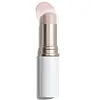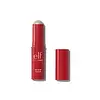What's inside
What's inside
 Key Ingredients
Key Ingredients

 Benefits
Benefits

 Concerns
Concerns

 Ingredients Side-by-side
Ingredients Side-by-side

Pentaerythrityl Tetraisostearate
EmollientDicaprylyl Carbonate
EmollientDiisostearyl Malate
EmollientBis-Diglyceryl Polyacyladipate-2
EmollientOzokerite
Emulsion StabilisingEthylhexyl Palmitate
EmollientMica
Cosmetic ColorantCocos Nucifera Oil
MaskingSynthetic Wax
AbrasivePolyisobutene
Tocopheryl Acetate
AntioxidantParfum
MaskingEthylhexylglycerin
Skin ConditioningPrunus Amygdalus Dulcis Oil
Skin ConditioningTin Oxide
AbrasiveRosa Rubiginosa Seed Oil
EmollientTocopherol
AntioxidantWater
Skin ConditioningButylene Glycol
HumectantPhenoxyethanol
PreservativeCitrullus Lanatus Fruit Extract
Skin ConditioningCitral
PerfumingLimonene
PerfumingHydroxycitronellal
PerfumingLinalool
PerfumingCI 77891
Cosmetic ColorantCI 77491
Cosmetic ColorantCI 77499
Cosmetic ColorantCI 77492
Cosmetic ColorantPentaerythrityl Tetraisostearate, Dicaprylyl Carbonate, Diisostearyl Malate, Bis-Diglyceryl Polyacyladipate-2, Ozokerite, Ethylhexyl Palmitate, Mica, Cocos Nucifera Oil, Synthetic Wax, Polyisobutene, Tocopheryl Acetate, Parfum, Ethylhexylglycerin, Prunus Amygdalus Dulcis Oil, Tin Oxide, Rosa Rubiginosa Seed Oil, Tocopherol, Water, Butylene Glycol, Phenoxyethanol, Citrullus Lanatus Fruit Extract, Citral, Limonene, Hydroxycitronellal, Linalool, CI 77891, CI 77491, CI 77499, CI 77492
 Reviews
Reviews

Ingredients Explained
These ingredients are found in both products.
Ingredients higher up in an ingredient list are typically present in a larger amount.
Ci 77491 is also hydrated iron III oxide. It's sole purpose is to give a red/pink hue to products.
Iron III oxides are classified as inorganic chemicals for coloring.
Synthetically created Ci 77491 is considered safer than those naturally found. This is because the synthetically created version may contain less impurities. Iron oxides are generally non-toxic and non-allergenic.
Learn more about CI 77491Ci 77891 is a white pigment from Titanium dioxide. It is naturally found in minerals such as rutile and ilmenite.
It's main function is to add a white color to cosmetics. It can also be mixed with other colors to create different shades.
Ci 77891 is commonly found in sunscreens due to its ability to block UV rays.
Learn more about CI 77891Diisostearyl Malate is an emollient and most often used in lip products. It comes from isostearyl alcohol, a fatty acid, and malic acid, an AHA.
As an emollient, Diisostearyl Malate helps create a thin film on your skin to trap moisture in. This helps keep your skin soft and smooth.
Mica is a naturally occurring mineral used to add shimmer and color in cosmetics. It can also help improve the texture of a product or give it an opaque, white/silver color.
Serecite is the name for very fine but ragged grains of mica.
This ingredient is often coated with metal oxides like titanium dioxide. Trace amounts of heavy metals may be found in mica, but these metals are not harmful in our personal products.
Mica has been used since prehistoric times throughout the world. Ancient Egyptian, Indian, Greek, Roman, Aztec, and Chinese civilizations have used mica.
Learn more about Mica